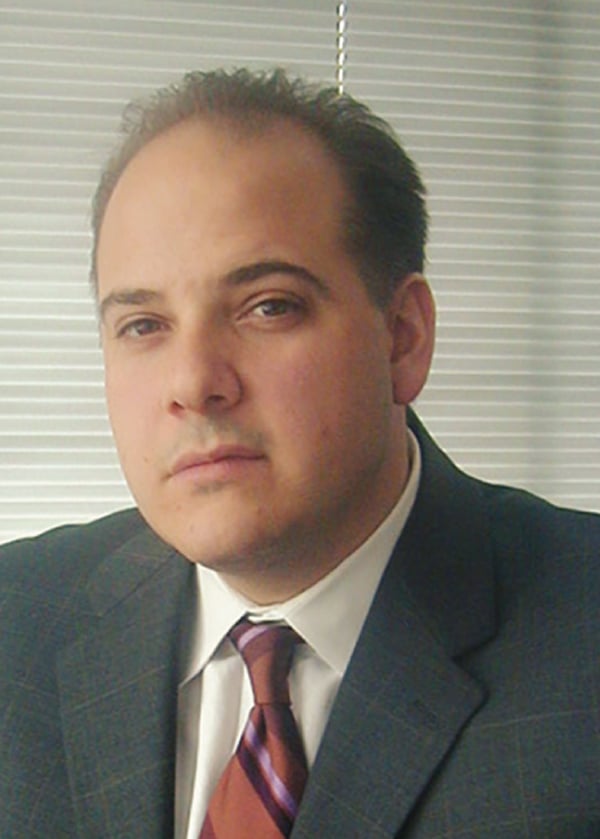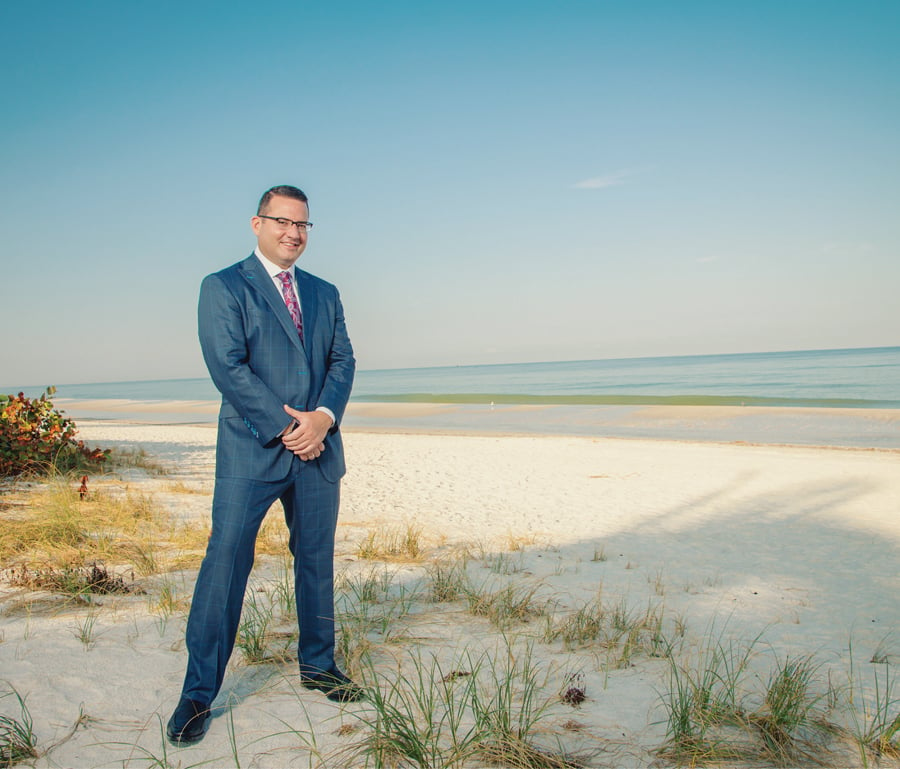The practice of selling both health benefits and property andcasualty insurance (P&C) from one brokerage continues to be agrowing trend at a time of industry consolidation and increasing use oftechnology. One important factor driving this trend is simply thematter of trust—once a broker has a strong relationship with aclient in one area, the client is more likely to want to work withthat broker in other capacities.
|In some ways, benefits insurance has much in common with theP&C world. Dan Thompson, a partner at Gulfshore Insurance inNaples, Florida, notes that the health of employees is key to both benefitsmanagement and workers’ comp—which is always a major part ofany P&C product.
|“The industry has often overlooked the fact that when you’remanaging risk through a workers’ comp program, you’re dealing withthe health of the employees and working to make sure they liftthings properly or that they adhere to proper practices to makesure that they’re safe,” he says. “Likewise, on the benefits side,we’re always talking about keeping employees healthy. So there's alogical connection between the two.”
|Size matters
One factor that drives this trend, of course, is competition. Asmany larger brokerages begin to explore the concept of a “one-stopshop” for insurance, other firms feel compelled to also sell inmultiple areas.
|Paul Praxmarer, a principal at Chicago-based Corkill InsuranceAgency, notes that when his company—originally a P&Cshop—started selling health benefits in the 1990s, the goal was toremain competitive with other brokerages. “That's how we started;it was a defensive response. You wanted to write the benefitsbecause you didn't want another broker to take your P&Cbusiness.”
|But like the story of Goldilocks, there is a certain sweetspot—not too big, not too small—when it comes to client size.
|Consultants say there is still clearly a limit to how much asmall agency can handle. Smaller, boutique shops are often notwell-suited to expand into other areas. Rob Calise, managingdirector of employee benefits with Hilb Group, based in Richmond,Virginia, notes that small, main-street agencies might not have theresources to handle both P&C and benefits sales. “An agencythat's just writing for small businesses would find it hard to do,”he says. “You do need size and scale to effectivelycross-sell.”
|Praxmarer also notes that very large employers tend to not buyboth benefits and P&C from the same source, since within abigger company, the HR department often has separate teams focusedon their specific areas. “Quite often, a very large company—that10,000-employee company—has a different benefits agency than theP&C agency,” he says.
|Selling to a smaller, middle-market company, where one person ora small team is responsible for buying both types of insurance, ismuch better suited for the one-stop-shop approach, he adds.
|Developing trust
Building a relationship with a client in one area can lead toselling insurance in the other, Thompson says. His brokerage hasdeveloped a level of trust and comfort with their clients to apoint where it just makes sense to work together in differentareas.
|“When we do a great job for the client on the commercial side,and we help them lower the severity and frequency of claims ontheir workers’ comp, we can then talk to them about severity andfrequency of claims on the benefits side. If their current agent'snot talking about it, then we are able to bring more value to thatclient. They already have a trusted relationship with us on thecommercial lines, so that only increases the probability of thesale on the benefits side,” he says.
|
|
Thompson adds that likewise, if a company is seeing the severityand frequency of claims going down on the benefits side, a brokercan then start a conversation about the P&C side. “It opens upthe opportunity to say ‘Hey, is your workers’ comp performing thatway?’ And if it isn't, then we’re able to show them the valueproposition on the commercial side.”
|Calise notes that the relationship goes both ways—an employerthat is willing to expand its relationship with a broker is, inturn, going to be a higher priority for that broker.
|“When you have more business with one brokerage, you get moreattention,” he says. “Your business is worth more; instead of an‘A’ client, you become an ‘A+’ client.”
|New technology, new approaches
Insiders say that even with the advances in benefits and claimsmanagement software, there is a need for more effective platformsthat work across both the benefits and P&C side. However,technology continues to evolve, and will remain crucial forbringing down costs.
|“Technology plays a big factor in understanding who your clientsare,” says Calise. “To be able to mine the company's database iscritical. The more information you have about clients, the easierit becomes to figure out who is a good benefits candidate, or who'sa good P&C client,” he adds. “It makes the job a heck of a loteasier and more efficient.”
| Technology also makes insurance management easier forclients, of course, and employers increasingly look forconsumer-friendly solutions. “The clients expect sophistication onboth sides,” Thompson notes. “It requires an investment in ITsystems.” He adds that the sales point is often slightly differentin the two areas: For benefits, the platform also has to work forindividual employees, whereas for the P&C side, it's only theemployer who is the main customer.
Technology also makes insurance management easier forclients, of course, and employers increasingly look forconsumer-friendly solutions. “The clients expect sophistication onboth sides,” Thompson notes. “It requires an investment in ITsystems.” He adds that the sales point is often slightly differentin the two areas: For benefits, the platform also has to work forindividual employees, whereas for the P&C side, it's only theemployer who is the main customer.
One area of innovation for brokers interested in selling bothbenefits and P&C may be in new partnership models. Thompsonnotes that his firm partners with a physician group that providessupport for both wellness programs on the benefits side andtreatment of injuries that fall into the workers’ comp area.
|In addition, Thompson speaks highly of the Ascend industrygroup, which coaches health benefits agents on new strategies forgrowth, including partnerships with P&C brokers. “It was agame-changing experience for me,” he says of discovering thesystem. “It's a group of more than 70 different benefits agencies.Some of them partner with separate P&C firms as a strategy tobring in business. It's a very interesting approach.”
|He notes that different states have different rules about thesetypes of partnerships, but adds that a partnership approach hasworked well for some smaller firms.
|All on the same page
With any dual approach, there may be some producers who areprotective of their relationships with clients and reluctant towork with agents from a different insurance area, Calise notes. Buthe says by focusing on the big picture, brokers can improve theirfirm's bottom line. “I think it's critical to get sales peoplealigned with what you’re trying to do and why you’re trying to doit,” he says. “It starts with a firm's leadership to set thetone.”
|
Praxmarer also emphasizes a team mentality. “The producer, theaccount manager, HR support; ultimately it's all tied together, sothe client views the agency as one entity,” he says. “It's allabout team selling.”
|Weathering the storm
Dan Thompson's firm, Gulfshore Insurance, based in Naples,Florida, was one of many businesses affected by Hurricane Irma. Thehurricane, one of the largest storms on record to hit Florida,devastated the company's office on Marco Island and damaged otherlocations as well. Thompson says the company's advance planningallowed it to keep functioning in the immediate aftermath of thehurricane.
|“The key is being prepared,” he says. “Every year, we do adisaster drill before hurricane season.” This year's drill wasnamed Hurricane Jack, after a retired chief sales officer for thefirm. The company-wide exercise brought in generators and otherresources so that the firm could prepare to operate during aweather-related disaster. The agency has also compiled adisaster-preparedness manual to help with training.
|“All of our IT data goes offsite; our policyholders can reach useven if the building blows away,” Thompson says. “We’ve executedthe plan through several hurricanes.”
|Even though Irma caused damage throughout the state, Thompsonnotes that it came during the tourist industry's slow season, so atleast businesses will have a chance to repair and rebuild beforethings get busy again. “For businesses down here, September is theslowest month of the year—not that anyone would want a hurricane atany time,” he says. “Many restaurants have business-interruptioninsurance. It was still a big mess, with power outages, trees down,septic systems backing up—it was a real nightmare.
|“We had a big client that had solar panels fly off the roof likeninja stars,” he continues. “It destroyed their entire fleet ofcars.”
|Thompson notes that the firm was flooded with calls immediatelyafter the storm and the company management brought food into theiroffices for workers handling claims.
|Overall, he said the company's carrier partners were able torespond quickly. “Insurance carriers were writing checks right inthe parking lot.” He adds that carriers gave the firm additionalflexibility concerning open enrollment season, since severaldeadlines were coming up.
|“We were lucky it wasn't worse.”
Complete your profile to continue reading and get FREE access to BenefitsPRO, part of your ALM digital membership.
Your access to unlimited BenefitsPRO content isn’t changing.
Once you are an ALM digital member, you’ll receive:
- Critical BenefitsPRO information including cutting edge post-reform success strategies, access to educational webcasts and videos, resources from industry leaders, and informative Newsletters.
- Exclusive discounts on ALM, BenefitsPRO magazine and BenefitsPRO.com events
- Access to other award-winning ALM websites including ThinkAdvisor.com and Law.com
Already have an account? Sign In
© 2024 ALM Global, LLC, All Rights Reserved. Request academic re-use from www.copyright.com. All other uses, submit a request to [email protected]. For more information visit Asset & Logo Licensing.








